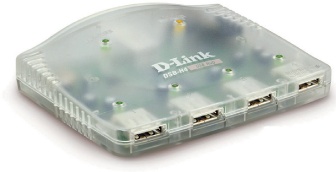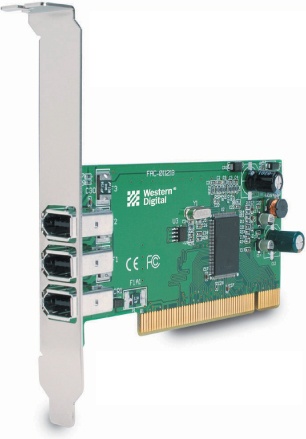Data is transferred from the scanner’s internal processing to the computer for storage. For this purpose, both scanner and computer must have a common external interface. The usual types of interface for scanners are SCSI, USB, and FireWire. Current models are offered almost exclusively with either USB 2.0 or FireWire. A PC can be upgraded with inexpensive expansion cards if the required interface is not included in the basic package.
In the days before USB 2.0 and FireWire, SCSI was the fastest external interface. Older scanners still use SCSI, but modern units are equipped with the more user-friendly FireWire or USB 2.0. Unlike SCSI, they support plug-and-play.
The Universal Serial Bus can connect practically any peripheral – keyboard, mouse, printer, scanner, and many other devices – to the computer, with the exception of the monitor. USB is a bus that allows for many devices to be connected in a tree topology, whereby USB hubs form the junctions for connections that branch out.
To utilize full bandwidth, connect the film scanner directly to a USB socket on the rear panel of the motherboard. If you place a USB hub in between, it could become a potential bottleneck for the high data transfer rates typical of film scanners. Theoretically, 127 USB peripherals can be connected to a PC, but they have to share the bandwidth of the bus. If you connect not only the scanner, but also printer, keyboard, mouse, and maybe even an external USB hard disk, the film scanner will not be able to use the full bandwidth of the interface. This can slow down the scan. There are two versions of the USB standard: USB 1.1 with a maximum bandwidth of 12 Mbit/s and USB 2.0 with a nominal bandwidth of 480 Mbit/s.
Don’t be fooled by the misleading terms “full speed” and “high speed” crawls at 12 Mbit/s. Newer PCs are equipped almost exclusively with USB 2.0, which is backward compatible. USB 2.0 devices can also operate in USB 1.1 mode. One side effect is that a single USB 1.1 device will slow down an entire USB 2.0 channel to USB 1.1 speed. Current computers typically have four to six USB ports on their motherboards. You should dedicate one port just for the film scanner and avoid connecting any other devices between PC and scanner. USB supports Hot Plug and Play, which lets you plug and unplug devices while the computer is running.
Don’t Restrain Your USB 2.0 Scanner
If your scanner supports USB 2.0, you should also connect it directly to a PC with a USB 2.0 port. You will slow it down unnecessarily by connecting it to a USB 1.1 port. This also applies if a USB 1.1 peripheral is connected to the same hub as your USB 2.0 scanner, or if the scanner is daisy-chained to a slower device. A common mistake is to install a USB 1.1 driver even though the motherboard supports USB 2.0. In the Windows Device Manager you can see whether the correct driver is installed. In some cases you may also have to check your BIOS settings to see whether USB 2.0 is enabled or not.
The computer no longer has to be switched off before connecting a new peripheral. Still, the scanner programs I know require the scanner to be turned on before launching the program. Not all USB cables support data transfer at the maximum speed of USB 2.0. To be on the safe side, it is best to use the original cable supplied with the scanner.
The IEEE 1394b standard is marketed under the names FireWire, i.Link, and Lynx. They are all based on the same technology. There are two different types of connectors: four contact and six contact. The difference between the two types is that the 6-pole connector also provides power for the bus.
With a maximum of 400 Mbit/s, FireWire supported high data transfer rates long before USB. FireWire is a mature technology. Despite that, the USB standard promoted by Intel has widely prevailed. New scanners are more likely to come with USB 2.0 rather than an IEEE 1394b interface.
The advantage of FireWire over USB is that devices cannot slow each other down. FireWire always gives each device full bandwidth, whereas devices on a USB bus have to share the bandwidth of a single data bus, which can lead to performance limitations. If, like the Epson Perfection V750 Pro, your scanner has a FireWire connection as well as USB, you should use FireWire. FireWire technology is definitely superior, even if USB’s relative cheapness has given it a greater market share.


